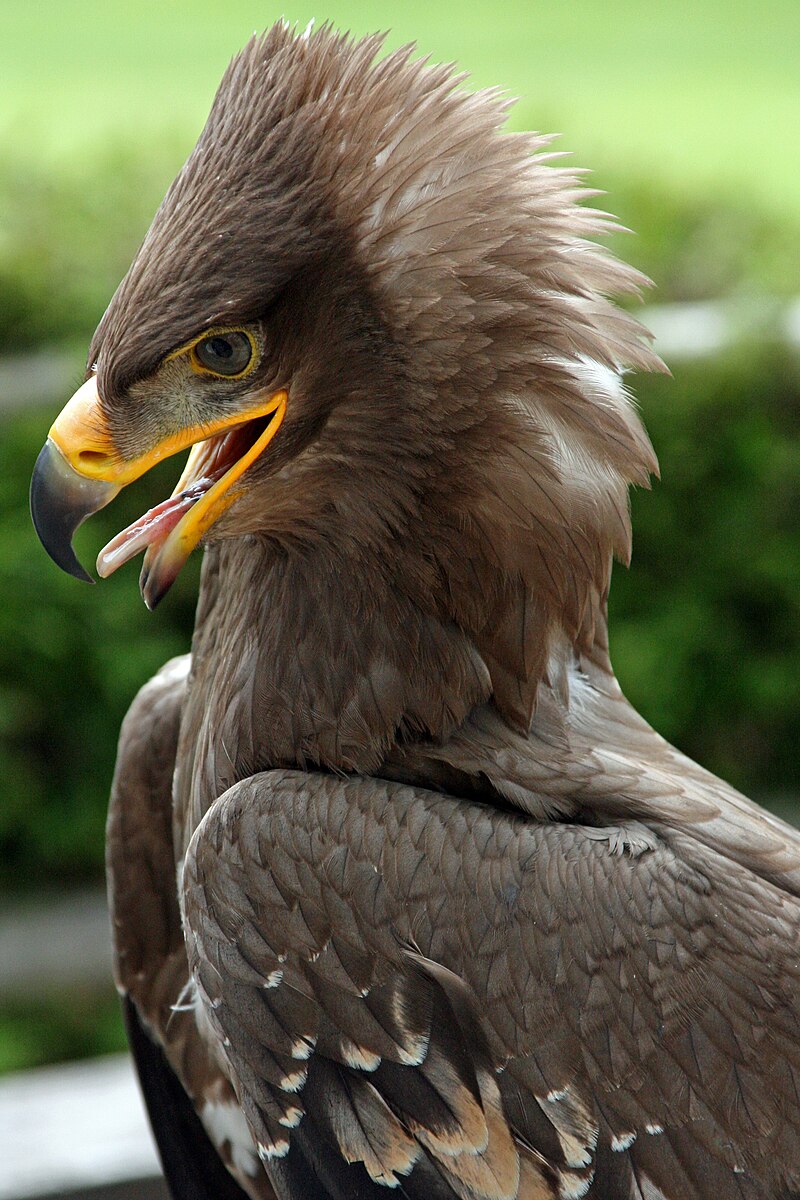Steppe eagles are fascinating birds of prey that inhabit the vast grasslands and steppes of Eurasia. In winter, their diet may shift to include more insects, such as termites and locusts, and small songbirds. They are also known to steal the prey of other raptors, a behavior known as kleptoparasitism.
Steppe Eagles’ Winter Diet
During the winter months, steppe eagles primarily feed on:
- Insects:
- Termites
- Locusts
-
Other insects
-
Small Songbirds:
- Sparrows
- Finches
-
Other small bird species
-
Scavenged Prey:
- Steppe eagles are known to steal the prey of other raptors, such as hawks and falcons, through kleptoparasitism.
In addition to these primary food sources, steppe eagles may also supplement their diet with:
- Small Mammals:
- Rodents
- Hares
-
Ground squirrels
-
Reptiles:
- Snakes
- Lizards
Adaptations for Winter Survival
 Image source: Steppe Eagle by Fimb
Image source: Steppe Eagle by Fimb
Steppe eagles are highly adaptable birds that can survive in diverse habitats, including the harsh winter conditions of their native range. They have several adaptations that help them thrive during the colder months:
-
Insulation: Steppe eagles have a thick, dense plumage that provides excellent insulation against the cold. Their feathers help trap heat and keep their body temperature regulated.
-
Hunting Strategies: During the winter, steppe eagles shift their hunting strategies to focus on more readily available prey, such as insects and small songbirds. They are skilled at locating and capturing these food sources.
-
Kleptoparasitism: Steppe eagles’ ability to steal the prey of other raptors gives them an advantage in finding food, especially when their primary prey may be scarce or difficult to catch.
-
Migratory Behavior: Some steppe eagle populations are migratory, spending the winter months in warmer regions, such as Eastern and Southern Africa, the Arabian Peninsula, and India. This allows them to access a more abundant food supply during the colder seasons.
Conservation Efforts
Conservation efforts are crucial to protect steppe eagles from threats such as habitat loss and degradation, pollution, and illegal hunting. These magnificent birds play an important role in maintaining the ecological balance of their ecosystems, and their conservation is essential for future generations to enjoy.
Some key conservation efforts for steppe eagles include:
- Habitat preservation and restoration: Protecting the grasslands and steppes where steppe eagles thrive is crucial for their survival.
- Reducing human-wildlife conflicts: Educating farmers and local communities about the importance of steppe eagles and their habitat can help mitigate conflicts and reduce threats.
- Monitoring and research: Ongoing monitoring and research on steppe eagle populations, behavior, and threats can inform conservation strategies.
- International cooperation: Collaborative efforts between countries within the steppe eagle’s range are necessary to ensure the species’ long-term survival.
By understanding the unique dietary and behavioral adaptations of steppe eagles, we can better appreciate these magnificent birds and support their conservation efforts. Through collective action, we can ensure that these impressive raptors continue to soar over the vast grasslands and steppes of Eurasia for generations to come.
References:
- The Peregrine Fund. (n.d.). Steppe Eagle. Retrieved from https://peregrinefund.org/explore-raptors-species/eagles/steppe-eagle
- Operation Migration. (n.d.). Steppe Eagle: The Ultimate Guide. Retrieved from https://operationmigration.org/steppe-eagle-the-ultimate-guide/
- Facts.net. (2024-03-06). 20 Steppe Eagle Facts. Retrieved from https://facts.net/nature/animals/20-steppe-eagle-facts/
- Thai National Parks. (n.d.). Steppe eagle (Aquila nipalensis). Retrieved from https://www.thainationalparks.com/species/steppe-eagle

